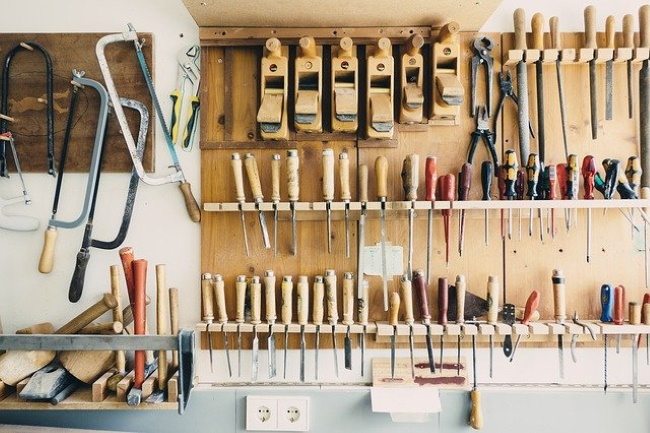There is a wide array of woodwork and general carpentry projects that do-it-yourself enthusiasts of varying degrees of skill and expertise would be able to not just successfully complete, but thoroughly enjoy the process.
Indoor woodworking projects are one of the most enjoyable jobs, yet they still demand a great deal of planning and preparation and, for the best results, it is equally important to never bite off more than you can chew. Here are the main dos and don’ts of at-home carpentry to help you on your do-it-yourself journey.

Image source
DO Wear Appropriate Clothing and Safety Gear
No matter how small you assume your woodworking project to be, and regardless of whether it will only take half an hour of your time or the whole morning, you must always make the effort to wear appropriate clothing and safety gear for every single carpentry project.
Invest in some high-quality protective eyewear and never have your hair or accessories dangling over any tools or equipment. Additionally, it should absolutely go without saying that you must never drink even a small amount of alcohol when using power tools of any description.
DON’T Ever Leave Tools or Machinery Unattended
Whether working in a factory or using woodworking power tools at home, one of the fundamental points to always remember is to never, under any circumstances, leave electricity machinery switched on and unattended. This is perhaps even more vital at home, where small children or even unsuspecting adults could seriously injure themselves if they accidentally touch any of the moving parts. Furthermore, if any of your electrical items become overheated, they may even run the risk of catching fire.
DO Only Use Sharp Tools
This may appear to be a very basic piece of advice, but ensuring you only use sharp tools and blades means you are far less likely to be injured whilst working and also results in a faster and more precise finish to your work.
Constantly sharpened blades and edges of tools are considerably safer and produce substantially more impressive results than blunt ones. Additionally, it is important you purchase quality tools and supplies, especially specifically designed sealants to fix together timber and metals, as poor-quality tools can also be just as dangerous as blunt ones.
DON’T Attempt Any Woodwork Project That is Too Complex
If, like many do-it-yourself enthusiasts, you are obsessed with home improvement TV shows and online video tutorials, you would be forgiven for thinking that some tasks are significantly easier and substantially less time-consuming than they are in reality.
If you would describe yourself as a relative newcomer to carpentry or have only ever attempted simple, minor projects in the past, build up your carpentry repertoire steadily and take the time to thoroughly research the project and plan every step of the way. For example, if you are the proud parent of fur babies like bunny rabbits, cats and small dogs, a wooden, collapsible, basic dog ramp so your furry friend can snuggle next to you on the cold winter evenings is a good idea for a first project.
The Dos and Don’ts of At-Home Carpentry,

